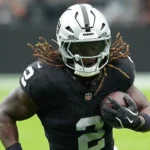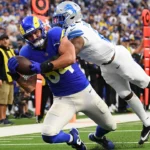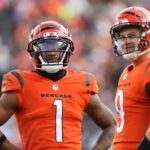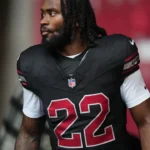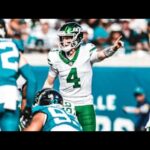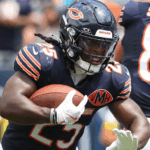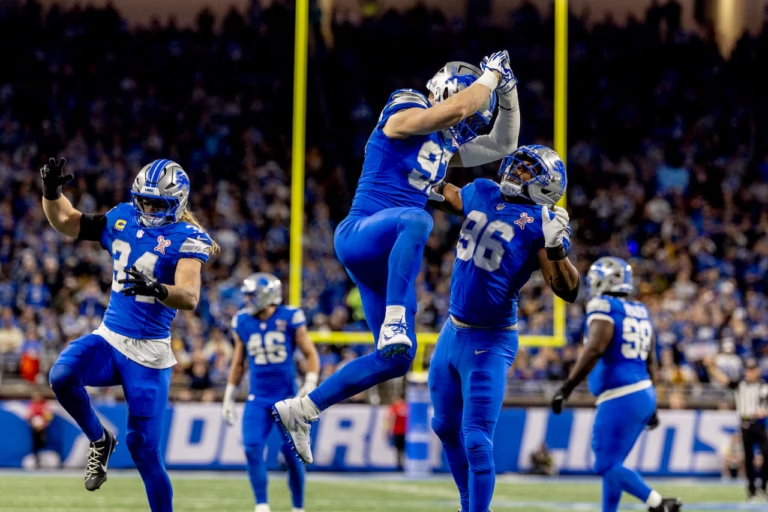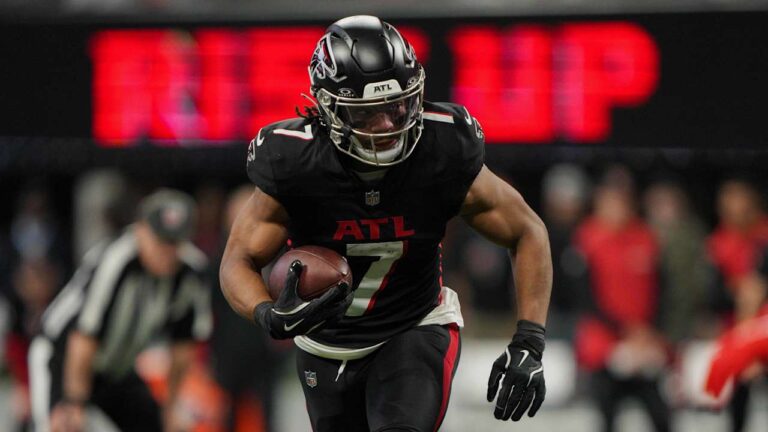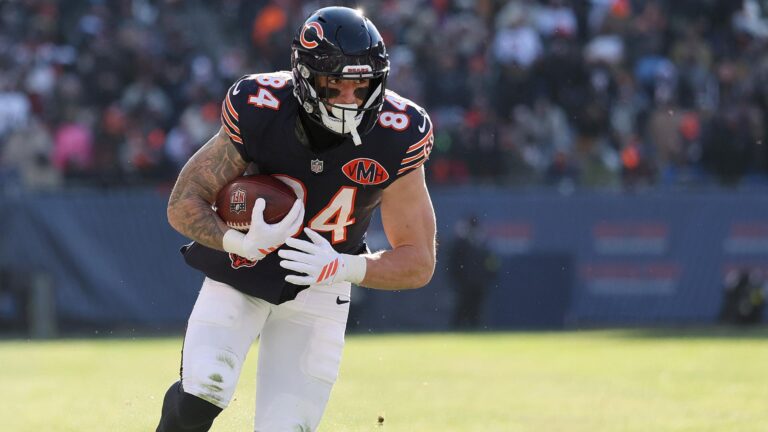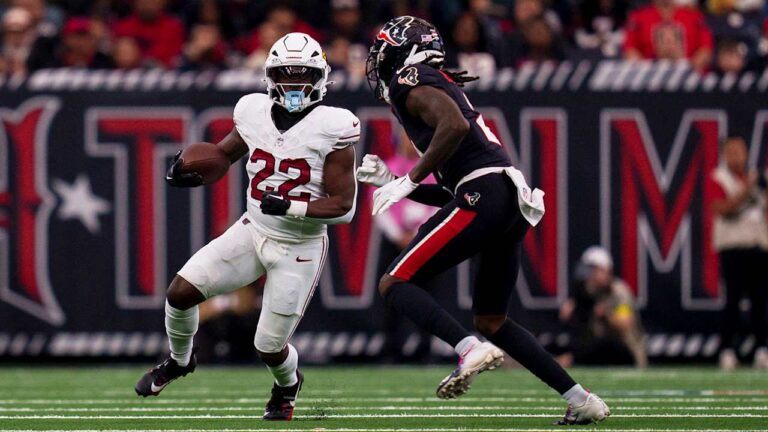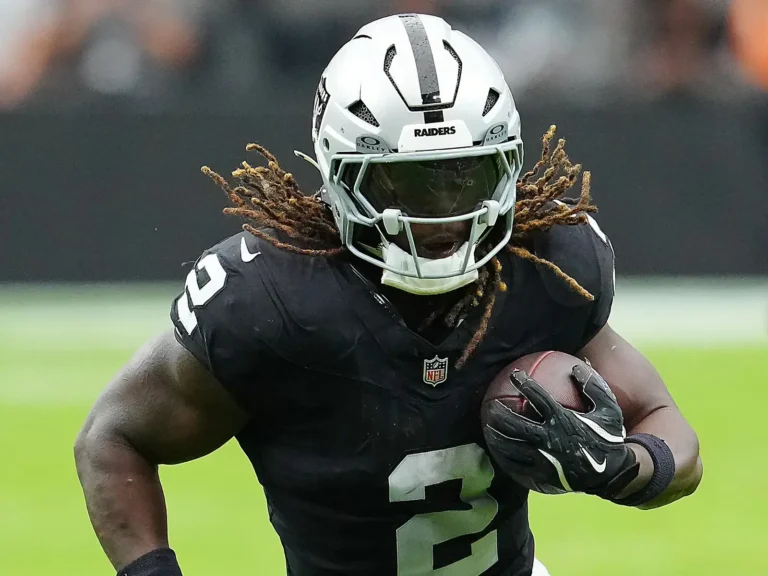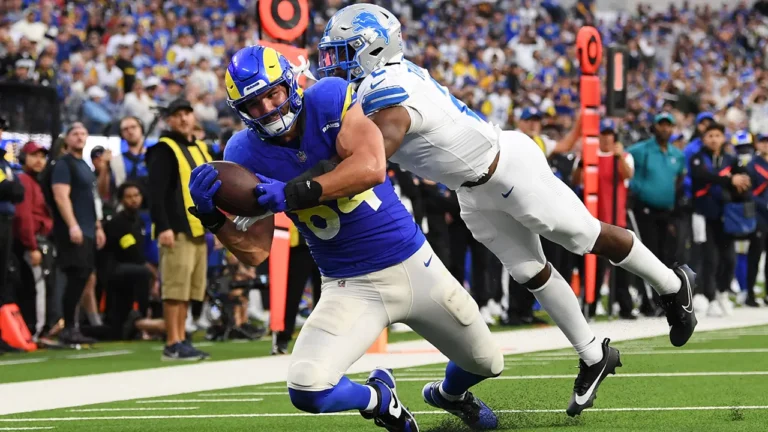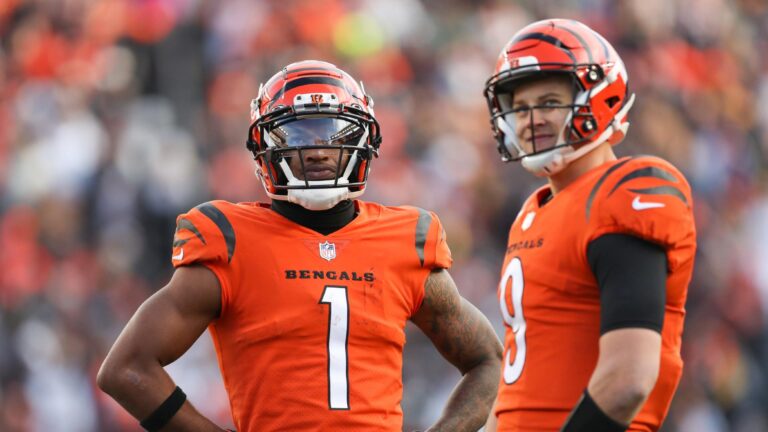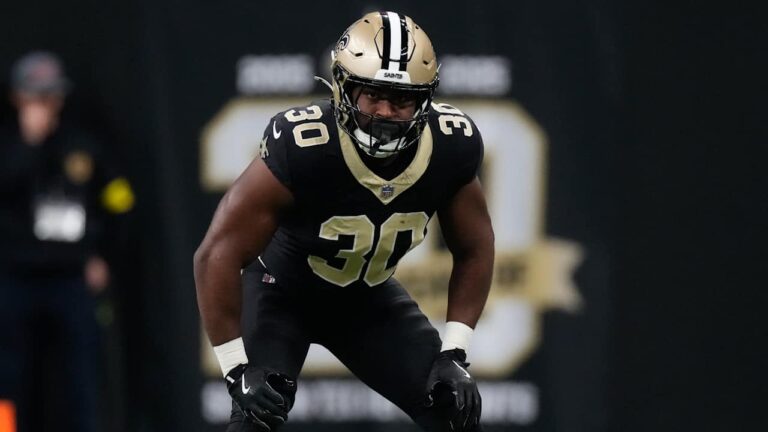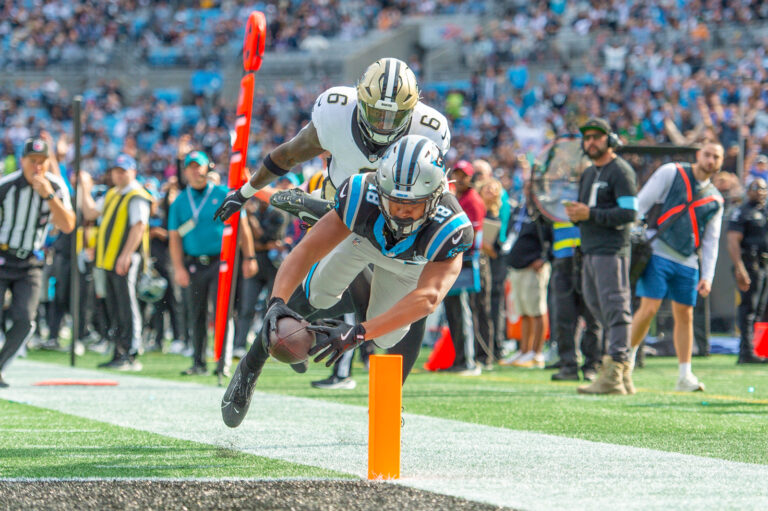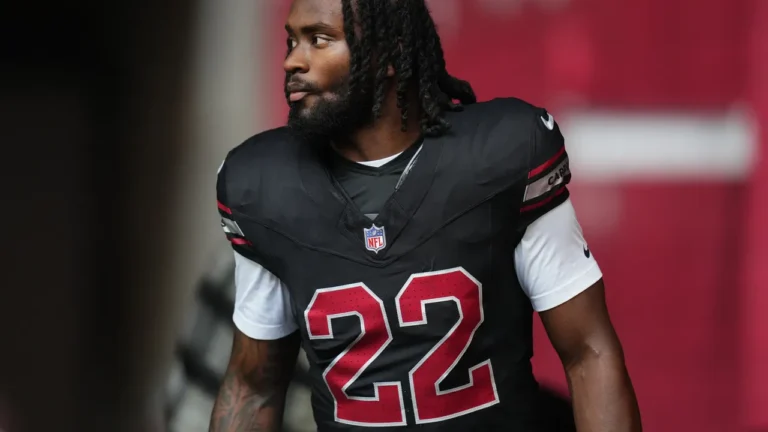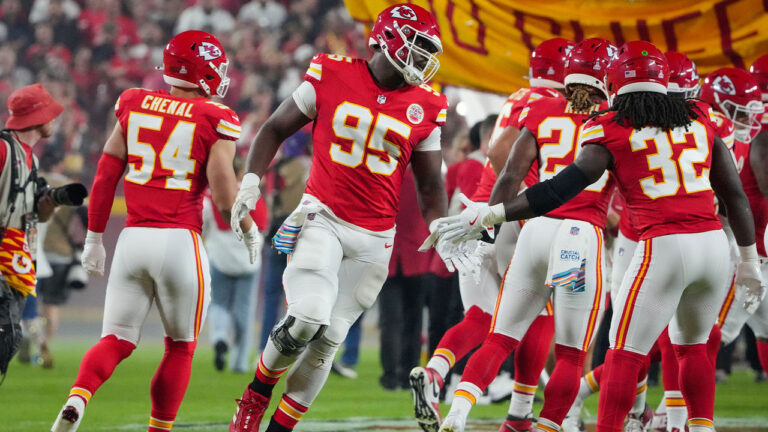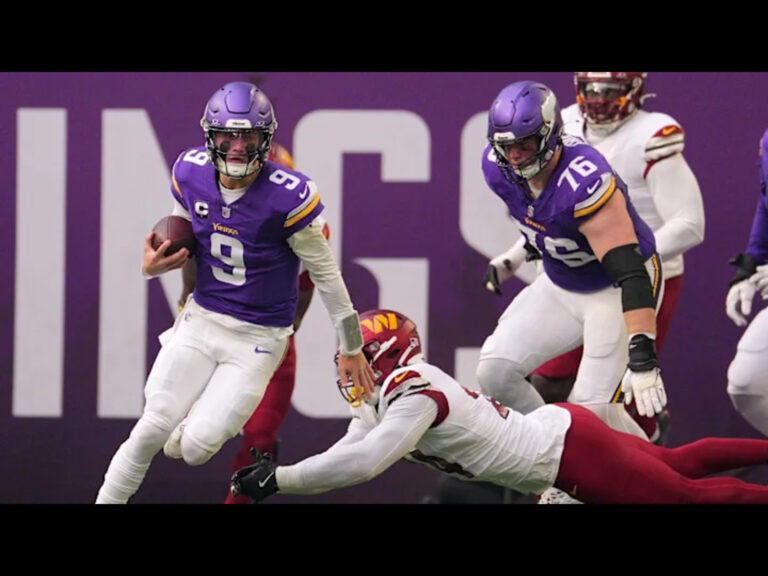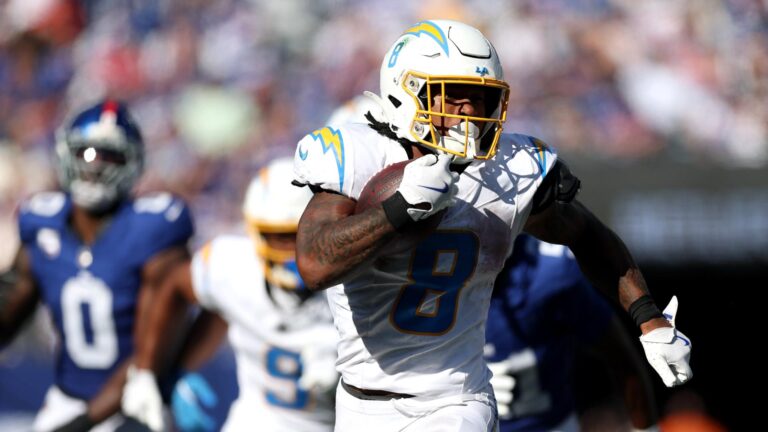Fantasy Football Championships are won with trades.
These fantasy football trade value charts are based on The Wolf’s Rest Of Season Rankings, who finished 2nd of 172 experts in FantasyPros’ Multi-Year Draft Rankings. These charts adjust values to account for positional need, assigning values based on a 1QB, 12-team, full PPR league, where quarterbacks are generally harder to trade due to a lack of positional need, unlike in Superflex leagues.
Each week throughout the season, these values will be altered to reflect the player’s value for the rest of the season. Be sure to tune back each week throughout the season. We’ll be adjusting the chart, discussing risers & fallers, and other QBs of interest, and providing a refresher on optimal trade strategy. The trade value chart for each position is linked below.
FANTASY FOOTBALL WEEK 11 TRADE VALUE CHART: QUARTERBACKS
Quarterback Riser – Matthew Stafford (24-for-36, 280 yards, 4 TDs)
Stafford leans heavier into the NFL MVP conversation after another stellar outing in week 10, now throwing for 13 TDs and no interceptions in his last three games. He sits at QB7 and if you picked him up as your fantasy team’s QB2, there may not be a better time to consider moving him to bolster your starting roster elsewhere for the stretch run.
Matthew Stafford is the first player in NFL history with 4+ pass TD and 0 INT in 3 straight games 😮💨@RamsNFL | #RamsHouse pic.twitter.com/spcWCQwGl1
— NFL+ (@NFLPlus) November 10, 2025
Quarterback Faller – Bo Nix (16-for-28, 150 yards, 1 TD, 2 INT, -2 yards rushing)
Nix had more trouble than he should have at home against a mediocre Raiders defense. It marks the sixth time out of this season’s ten weeks that he’s finished outside the top-12 fantasy QBs for the week, the fourth time no higher than QB19. Nix has been the volatile type of player you don’t want to have to rely on to make a fantasy playoff run and it may be fruitful to consider more stable options to trade for even if they don’t present as exciting of a ceiling.
Other Quarterbacks Of Interest – JJ McCarthy (20-for-42, 248 yards, 1 TD, 2 INT)
Initial optimism for McCarthy had to pause quickly after his early-season ankle sprain, but after two weeks back he hasn’t made a case that he’ll be a reliable option for fantasy at any point this season. Week 10 highlights his struggles against the Ravens as he had trouble connecting with Justin Jefferson and Jordan Addison. Even in a 27-24 win against the Lions in week 9, he only passed for 143 yards. Any impressive production he has this season should be taken with caution before thinking that he has truly arrived, as the second-year QB really didn’t start getting his first live game reps until this year.
Trade Strategy Reminders
Aim To Fill Holes On Your Roster, And Your Trade Partner’s
In general, trade offers that clearly benefit both teams’ overall value, not just your own, will make a trade partner more cooperative. However, being mindful of depth concerns with all teams involved in a trade will only increase the chance of that cooperation. Be mindful not just of weak positional depth, but a surplus of positional depth, with all your league’s rosters. You might have a shortlist of players you’d love to be able to trade for, but if what you have to offer isn’t what your trade partner needs, your offers will likely fall on deaf ears. Say you’re weak at RB, and have a surplus at WR. Teams that are strong at RB, but weak at WR, are naturally more eager to haggle.
Never Mention The Words “But The Trade Calculator Says”
Charts and calculators are a reference that can help find ideal trades, but they’re not gospel, and trying to make your potential trade partner think otherwise could shut the door on negotiations real quick. Even if your charts/calculators show the trade offer to be in your league mate’s favor, they probably have tools and references of their own, and the next time “But the trade calculator says” changes someone’s mind, may be the first time.
Be Careful How Low-Ball Your Offers Are
Speaking of bad faith, a trade offer that is too clearly in your favor puts you in danger of potential trade partners shutting you out not just for that particular trade negotiation, but any future ones as well. It’s a great feeling to get those kinds of lopsided trade deals, but the ones that are so bad they only go through 1 percent of the time likely aren’t worth hitting the send button to begin with. At their core, fantasy players aren’t complete masochists; they just want to have fun with it, and somebody sending them insulting offers isn’t fun.
WEEK 11 TRADE VALUE CHART: QUARTERBACKS
| Rank | Player Name | Team | Value |
|---|---|---|---|
| Tier 1: Top QB | |||
| 1 | Josh Allen | BUF | 1058 |
| Tier 2: High QB1 Options | |||
| 2 | Patrick Mahomes II | KC | 836 |
| 3 | Jalen Hurts | PHI | 796 |
| 4 | Drake Maye | NE | 788 |
| 5 | Lamar Jackson | BAL | 781 |
| Tier 3: Low QB1 Options | |||
| 6 | Dak Prescott | DAL | 569 |
| 7 | Matthew Stafford | LAR | 563 |
| 8 | Joe Burrow | CIN | 533 |
| 9 | Justin Herbert | LAC | 491 |
| 10 | Brock Purdy | SF | 461 |
| 11 | Jaxson Dart | NYG | 425 |
| 12 | Daniel Jones | IND | 419 |
| 13 | Caleb Williams | CHI | 413 |
| Tier 4: Backups | |||
| 14 | Jacoby Brissett | ARI | 335 |
| 15 | Jared Goff | DET | 330 |
| 16 | Baker Mayfield | TB | 326 |
| 17 | Jordan Love | GB | 219 |
| 18 | Bo Nix | DEN | 210 |
| 19 | Sam Darnold | SEA | 165 |





